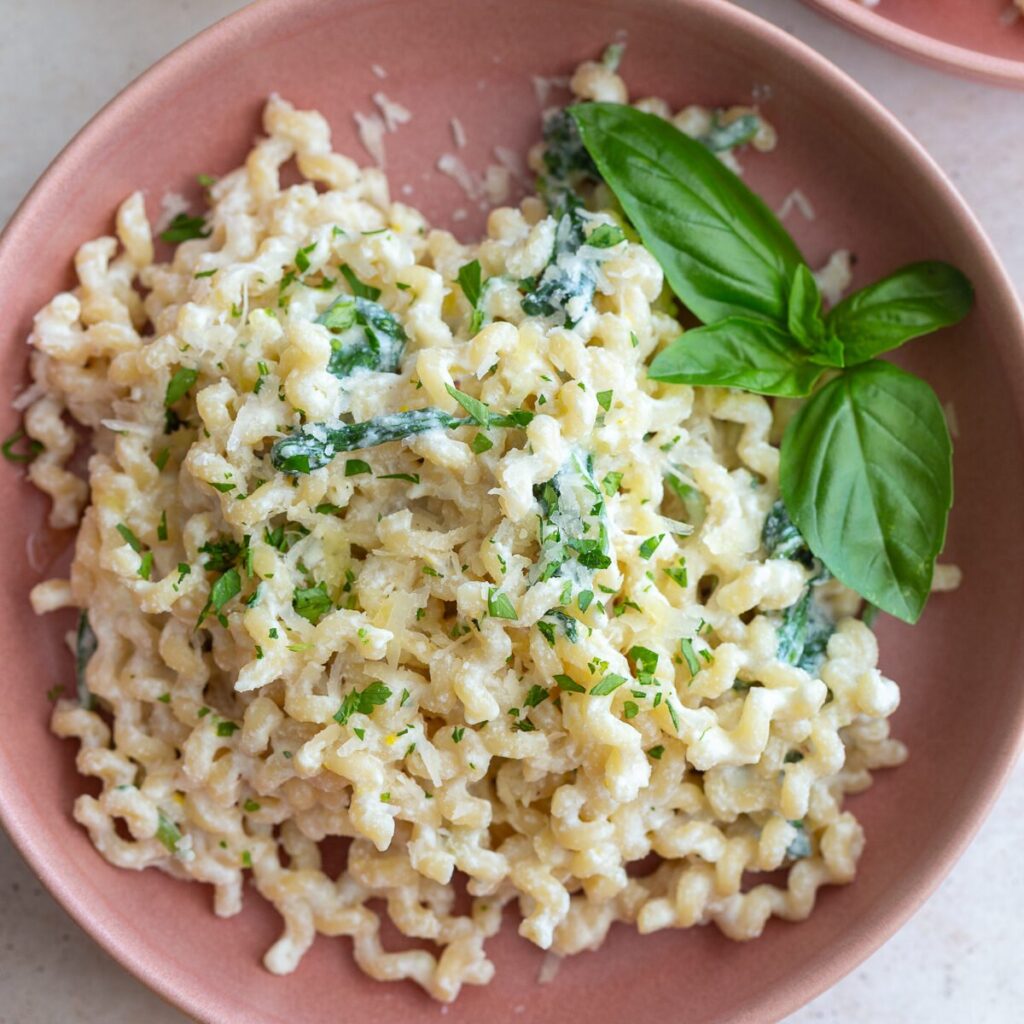There’s something timeless about a bowl of pasta that comes together in minutes yet feels like an indulgence worthy of a restaurant table. That’s exactly what this Easy Ricotta Pasta delivers—creamy, flavorful, and comforting, all in under 20 minutes. With pantry staples and a few fresh ingredients, this recipe makes weeknight dinners not only easier, but truly satisfying.
As part of our ongoing mission at Sustainable Action Now to highlight healthier, more mindful cooking that doesn’t sacrifice taste, this recipe embodies everything we love about simple, plant-forward meals. Whether you’re feeding a busy household, cooking for yourself, or looking for a versatile dish that can be adapted to suit different diets, ricotta pasta deserves a spot in your weekly rotation.
For more inspiration, you can explore other sustainable and easy-to-make dishes in our recipes collection.
Why You’ll Love This Recipe
This recipe is proof that you don’t need a long ingredient list or hours in the kitchen to create a meal that feels special. Here’s why people are falling in love with ricotta pasta:
- Quick and convenient: From boiling water to twirling that first forkful, it takes just about 20 minutes.
- Creamy without heavy cream: Ricotta naturally creates a luscious sauce, offering comfort without the weight of cream-based sauces.
- Customizable: Add fresh herbs for brightness, squeeze in lemon for a zesty lift, toss in spinach or seasonal veggies for more nutrition, or bulk it up with beans, chickpeas, or your protein of choice.
- Budget-friendly: Made with staple ingredients like pasta, garlic, olive oil, and parmesan, it’s a low-cost dish with big flavor payoff.
Ingredients You’ll Need
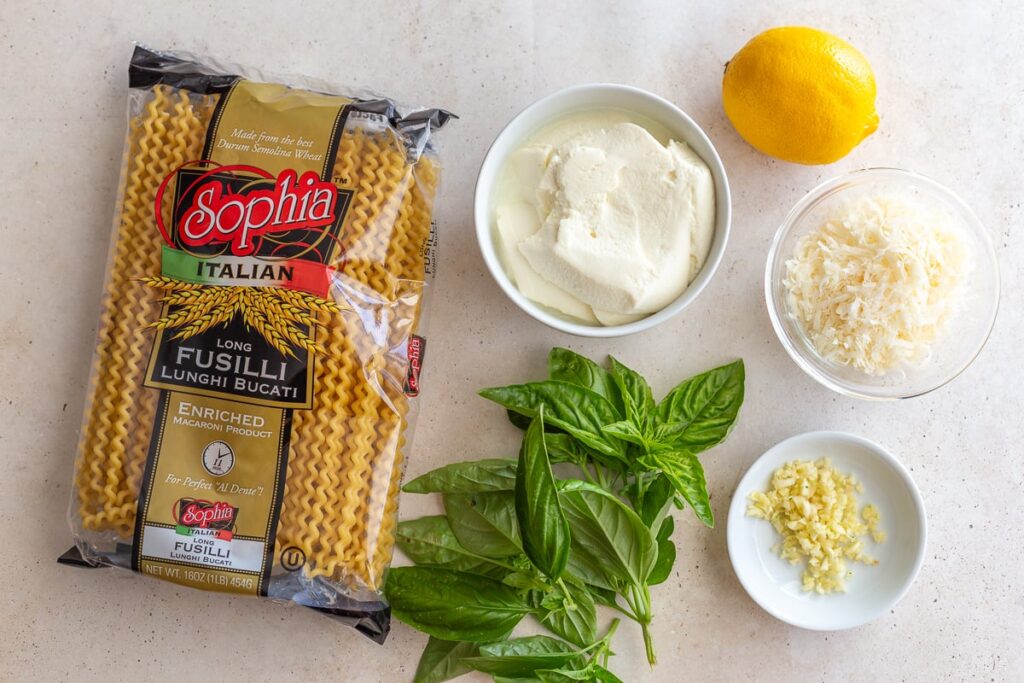
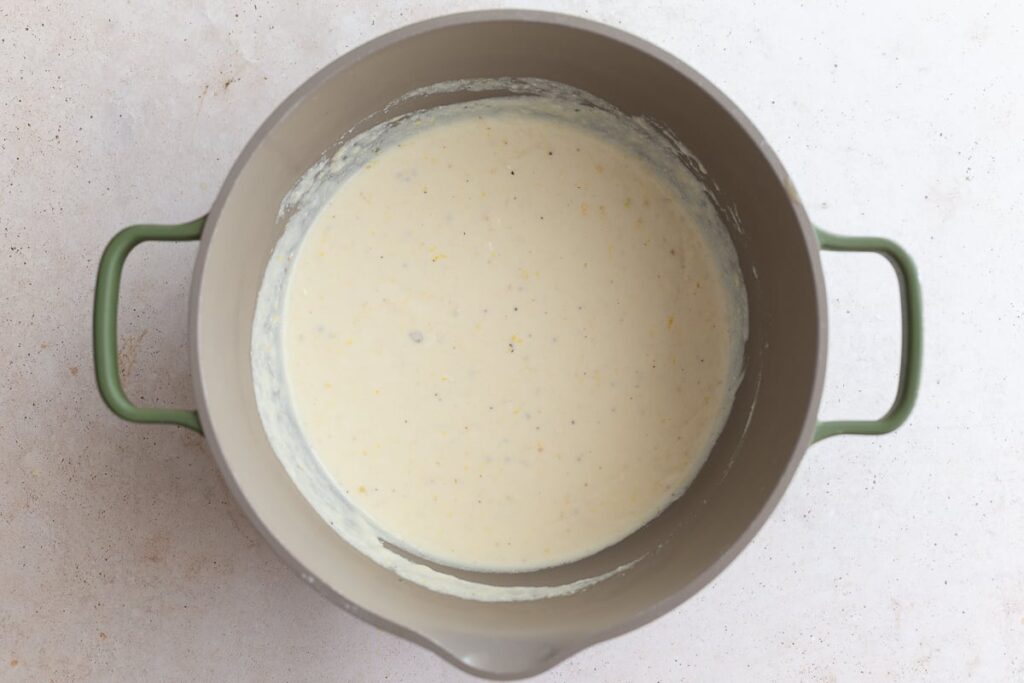
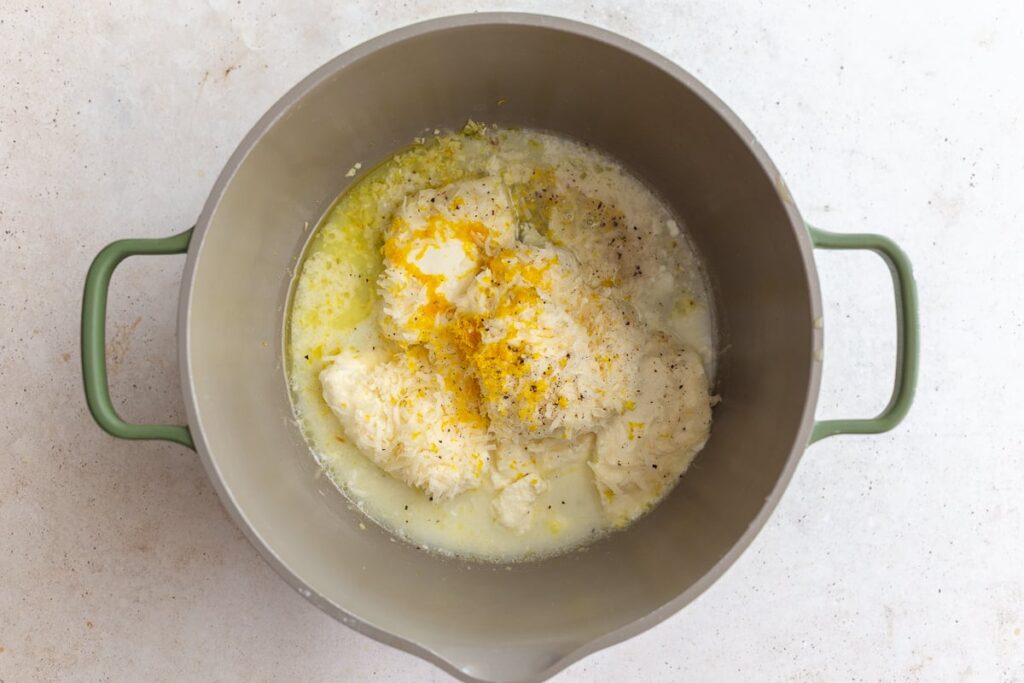
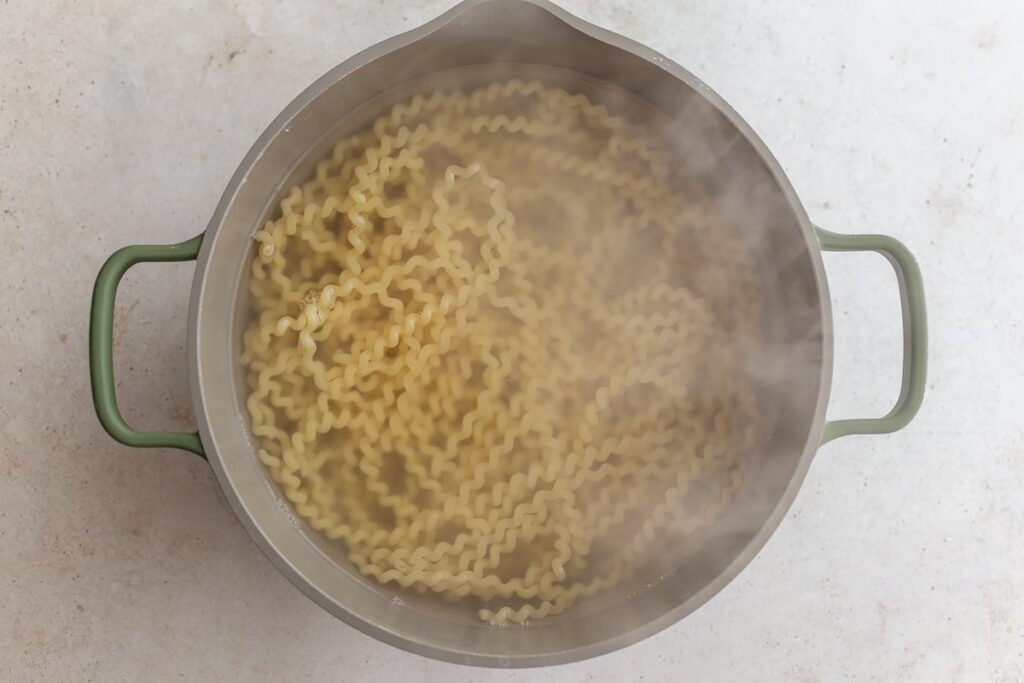
Here’s a quick rundown of the main ingredients, plus some tips for substitutions:
- Pasta: Any type works—fusilli, spaghetti, rigatoni, or even protein pasta.
- Ricotta: Whole milk ricotta is best for creaminess, but part-skim works if you prefer a lighter dish.
- Parmesan: Always opt for freshly grated—it melts better and has richer flavor than pre-shredded.
- Garlic: Four cloves (at minimum!) provide the depth this sauce deserves.
- Olive Oil (or butter): For sautéing garlic and adding richness.
- Lemon (optional): Adds brightness and balances the creamy texture.
- Fresh herbs: Basil is classic, but parsley, chives, or even dill can complement beautifully.
- Spinach (optional): Adds color, nutrition, and texture without overpowering the dish.
How to Make Creamy Ricotta Pasta
- Cook the pasta: Start by boiling your pasta in salted water. Reserve at least 1 ½ cups of that starchy water before draining—it’s the key to achieving a silky sauce.
- Build the sauce: In the same pot, heat olive oil and sauté garlic until fragrant. Lower the heat and stir in ricotta, parmesan, lemon zest, and juice. Slowly add the reserved pasta water, stirring constantly, until the sauce becomes smooth and creamy.
- Add greens and seasonings: Toss in spinach and cook just until wilted. Season generously with salt and freshly ground black pepper.
- Combine and serve: Return the pasta to the pot, tossing to coat every piece with sauce. Adjust the consistency with more pasta water if needed. Finish with extra parmesan and herbs on top.
The result? A bowl of pasta that’s creamy, savory, and just a little tangy from the lemon—a dish that feels indulgent but comes together with simplicity.
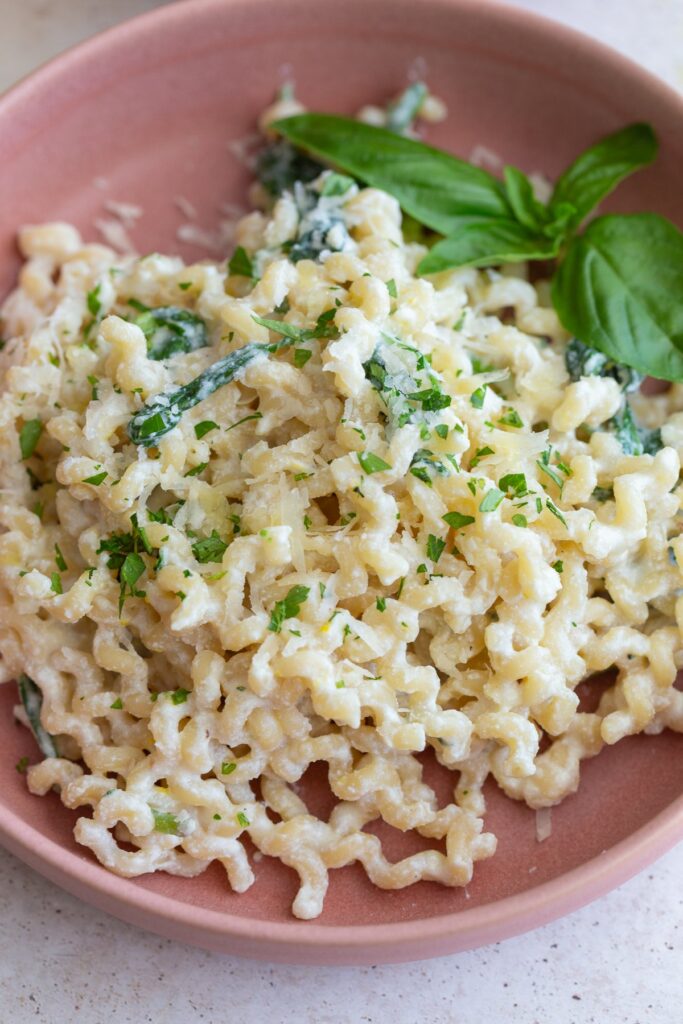
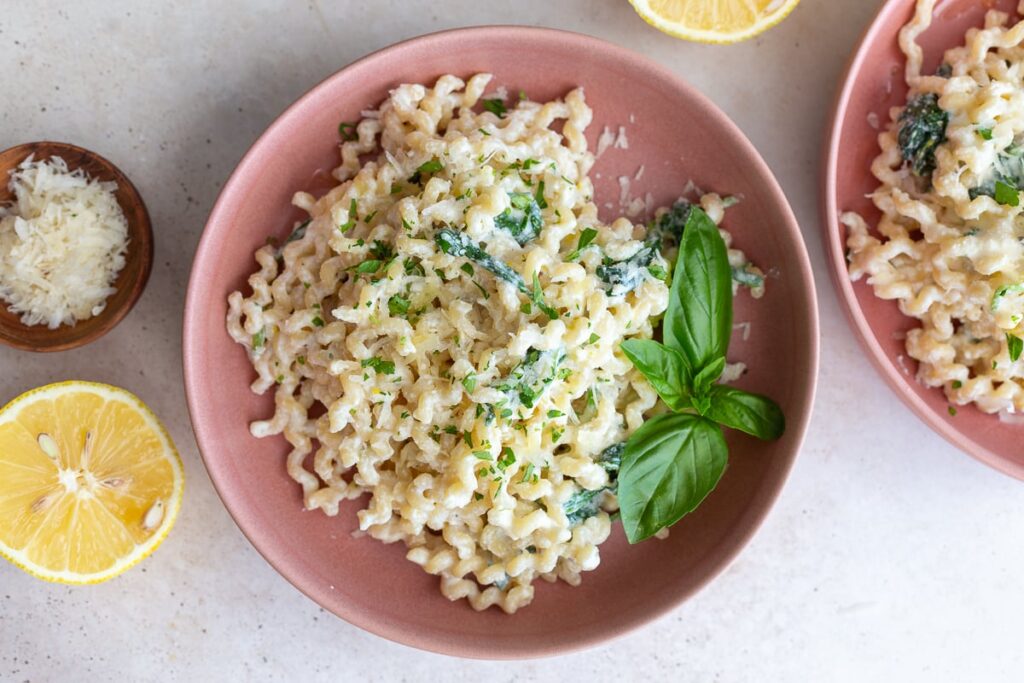
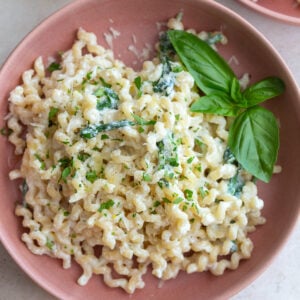
Expert Tips for Perfect Ricotta Pasta
- Save more pasta water than you think you’ll need—ricotta sauces can be thick, and the water helps loosen it while adding flavor.
- Use whole milk ricotta for maximum creaminess, or part-skim for a lighter take.
- Don’t skip the parmesan—it adds depth, saltiness, and the perfect balance to ricotta’s mildness.
- Add lemon at the end for the freshest flavor, or skip it if you prefer a richer, less tangy dish.
- Expect slight graininess: Ricotta doesn’t melt like cream cheese; it softens and blends into the sauce, leaving a slightly rustic texture.
Frequently Asked Questions
Can I substitute ricotta with cottage cheese?
Yes, but blend it first to smooth out the texture.
Can this recipe be made vegan?
Absolutely—use vegan ricotta and swap parmesan for nutritional yeast or a plant-based parmesan alternative.
Can I add protein?
Definitely. Try white beans, chickpeas, sautéed tofu, or your preferred meat if you’re not keeping it vegetarian.
How do I store leftovers?
While best enjoyed fresh, leftovers can be refrigerated for up to 3 days. Add a splash of water or broth when reheating. This dish isn’t freezer-friendly—ricotta tends to separate when frozen.
Nutrition Snapshot (per serving)
- Calories: ~484
- Carbohydrates: 63g
- Protein: 21g
- Fat: 16g
- Calcium: 278mg
- Vitamin C: 17mg
Calories: 484kcal | Carbohydrates: 63g | Protein: 21g | Fat: 16g | Saturated Fat: 8g | Polyunsaturated Fat: 1g | Monounsaturated Fat: 6g | Cholesterol: 42mg | Sodium: 286mg | Potassium: 364mg | Fiber: 3g | Sugar: 3g | Vitamin A: 1607IU | Vitamin C: 17mg | Calcium: 278mg | Iron: 2mg
This dish strikes a balance between comfort and nutrition, offering protein, calcium, and fresh herbs while still delivering the creamy satisfaction of a pasta night favorite.
In a world where busy schedules often push us toward takeout or heavily processed meals, recipes like this Easy Ricotta Pasta remind us how simple, affordable, and rewarding it can be to cook at home. It’s versatile enough for a family dinner, yet elegant enough to serve to guests.
At Sustainable Action Now, we believe that recipes like this show how eating well doesn’t have to be complicated. By using fresh, real ingredients, you can nourish yourself while cutting back on processed foods—and enjoy every bite in the process.
For more simple, delicious, and sustainable meal ideas, check out our recipes section. This is a Food For Feeling Recipe.
✅ Sustainable Action Now’s Take: Easy Ricotta Pasta is more than a weeknight dinner—it’s a reminder that sustainable cooking starts with simple choices. By relying on fresh, wholesome ingredients, you can create meals that are better for your health, your wallet, and the planet.

